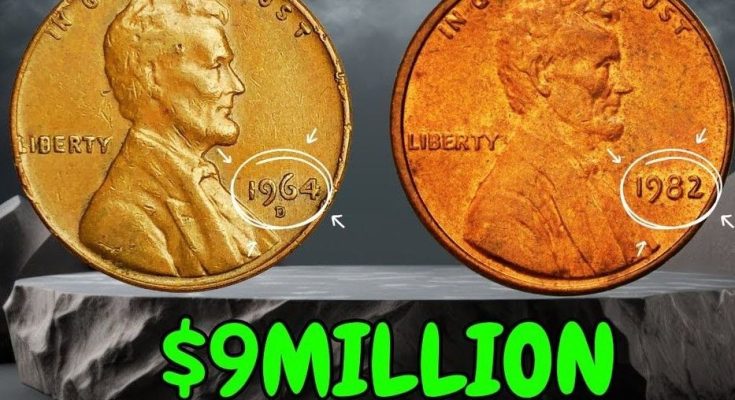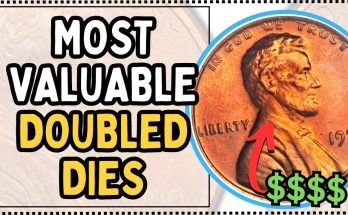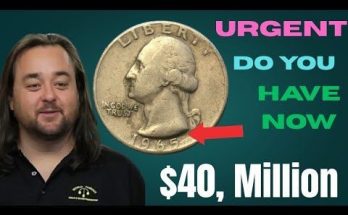The humble one-cent coin—the penny—is the most common piece of currency in circulation, often tossed into jars, forgotten in couch cushions, or left to gather dust in a coin tray. Yet, for a select few, this insignificant copper (or zinc) disk holds the key to an unimaginable fortune. The caption, “RETIRE IF YOU FIND THIS MOST VALUABLE USA 1 CENT PENNIES THAT COULD MAKE YOU A MILLIONAIRE!,” is not hyperbole. It’s an invitation to a real-life treasure hunt where the prize is financial freedom, all stemming from rare, often accidental, striking errors and key-date rarities.
The concept of a “Millionaire Penny” primarily revolves around a few legendary error coins that were mistakenly produced and managed to escape the U.S. Mint. These anomalies are so rare that their existence upends all expectations of a coin’s face value, turning a simple cent into a six or even seven-figure asset at auction.
The Holy Grail: The 1943 Copper Penny
If you’re looking for the ultimate prize, the undisputed king of valuable pennies is the 1943 Lincoln Cent Struck on Bronze Alloy. During World War II, copper was a critical material needed for the war effort, so the U.S. Mint transitioned the penny’s composition to zinc-coated steel. However, a tiny handful of bronze planchets (the blank coin disks) from the previous year were accidentally left in the presses and struck with the 1943 die. The result is a spectacular error: a copper penny from a year when they should all be steel.
Only about 40 of these have ever been authenticated, and their value reflects their scarcity. A 1943-D (Denver Mint) Bronze Penny holds the record for the most expensive cent ever sold, fetching an astounding $1.7 million at auction. The next time you find a 1943 penny, pull out a magnet. If it doesn’t stick, you could be holding your retirement fund.
The Counterpart: The 1944 Steel Penny
The wartime transitional errors cut both ways. In 1944, the Mint switched back to the copper-based alloy (from recycled shell casings). Just as some copper blanks slipped into the 1943 batch, a small number of the leftover zinc-coated steel planchets were accidentally struck with the 1944 dies. The 1944 Steel Cent is the much rarer reverse error. While the 1944-S Steel Cent (San Francisco Mint) is known to exist, the 1944-D (Denver Mint) Steel Cent is considered one of the great numismatic puzzles. Owning one is a near-instant ticket to a six-figure payday, with top-grade examples soaring well over $400,000.
The Doubled Die Marvel: The 1969-S Lincoln Cent
Not all valuable coins are material errors. Some are the result of a flaw in the die-stamping process. The 1969-S Lincoln Cent with a Doubled Die Obverse (DDO) is legendary. This error is characterized by a clear, distinct doubling of the date (“1969”) and the word “LIBERTY.” This is not a common, slight misaligned strike; the doubling is so dramatic that it is often visible to the naked eye.
Its extreme rarity is due to the fact that most were caught and destroyed by the Mint before release. Current estimates suggest fewer than 100 authentic pieces are known to exist. Because of this phenomenal scarcity, a high-grade example of the 1969-S DDO has reached auction prices of up to $1.7 million, placing it in the same elite, life-changing category as the 1943 Copper Cent.
Your Treasure Hunt Checklist
The search for a “millionaire penny” requires diligence and an eye for detail. Beyond the top three, other highly sought-after rarities that can still fetch tens or hundreds of thousands of dollars include:
- 1909-S VDB: The first year of the Lincoln Cent, with the designer’s initials on the reverse, produced in low numbers at the San Francisco Mint.
- 1955 Doubled Die Obverse: The most famous of the Doubled Die errors, easily recognizable in the date and motto.
- 1982-D Small Date Copper: A transitional error during the shift from copper to zinc that remains one of the greatest modern rarities, with only two authenticated pieces known.
To begin your hunt and potentially retire on a one-cent coin, remember the fundamentals: check the Date, look for the Mint Mark (D for Denver, S for San Francisco, or none for Philadelphia), and most critically, learn to identify the subtle Errors and Varieties that separate a one-cent coin from a six-figure treasure. The next time you see a stray penny, remember that you could be one glance away from finding the most valuable coin in American numismatics. The fortune is out there, waiting in the most unexpected of places.



